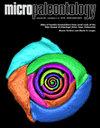东北印度洋托尔顿海域(NGHP- 01- 17A)硅藻组合:与重要放射虫和钙质纳米化石事件的相关性
IF 1.6
4区 地球科学
Q3 PALEONTOLOGY
引用次数: 1
摘要
本文对东北印度洋NGHP沉积物岩心(NGHP-01- 17a)进行了以硅藻和放射虫为代表的不同硅质微化石以及钙质纳米化石的研究。从沉积物岩心最底部的Ic亚单位(684.09 mbsf至369.62 mbsf)的样品进行了分析。这是对东北印度洋近海托尔顿硅藻组合的首次综合描述,并将其与放射虫带相结合。为了更精确地确定层序的相对年龄,还将获得的数据集与钙质纳米化石带进行了对比,最终试图建立一个完整的生物地层学。详细的硅藻分类分析表明,存在118个硅藻类群,隶属于49属。使用CONISS聚类分析确定了三个硅藻生物带。根据研究样本放射虫分类群指数,整个序列可划分为RN6、RN7和RN8区。样品中还含有钙质纳米化石的地层标志分类群,可以识别与CNM13 - CNM16相对应的NN9、NN10和NN11带。岩心分析剖面最底部和最顶部样品的年龄分别为< 10.49 Ma和< 7.39 Ma。为了估计沉积速率,提出了一个使用硅藻、放射虫和钙质纳米化石事件的年龄-深度模型。本研究的所有微化石组合都与已知的晚中新世组合,特别是来自DSDP、ODP、IODP考察的托尔顿组合以及印度洋和赤道太平洋的陆上沉积物相关联。通过多样性分析,定量地估计了硅藻类群的多样性和优势度。计算了硅藻的浮游/底栖比,以评估水深。本文章由计算机程序翻译,如有差异,请以英文原文为准。
Diatom assemblages from the Tortonian of northeast Indian Ocean (NGHP- 01- 17A): correlation with significant radiolarian and calcareous nannofossil events
The present study has been carried out from the NGHP sediment core (NGHP-01-17A) of northeast Indian Ocean on different siliceous microfossils represented by diatoms and radiolarians along with calcareous nannofossils. Samples from the bottommost subunit Ic of the sediment core (684.09 mbsf to 369.62 mbsf) have been analysed. This contribution is the first comprehensive account on the Tortonian diatom assemblages from the offshore of northeast Indian Ocean that has been integrated with the radiolarian zonations. For determining the relative age of the sequence more precisely the obtained dataset also have been correlated to the calcareous nannofossil zones and eventually an attempt has been made to establish an integrated biostratigraphy. Detailed taxonomic analysis of the diatoms reveals the presence of 118 diatom taxa belonging to 49 genera. Three diatom biozones have been determined using CONISS cluster analysis. Based on the index radiolarian taxa in the studied samples, the entire sequence is assignable to RN6, RN7 and RN8 zones. The samples also contain stratigraphic marker taxa of calcareous nannofossils that allow identifying NN9, NN10 and NN11 zones corresponding to CNM13 - CNM16 zones. The ages of the bottommost and topmost sample of the analysed section of the core have been estimated < 10.49 Ma and > 7.39 Ma respectively. To estimate the sedimentation rate an age-depth model has been proposed using diatom, radiolarian and calcareous nannofossil events. All the microfossil assemblages of the present study have been correlated with the known assemblages of late Miocene, specifically Tortonian from DSDP, ODP, IODP expeditions and onshore sediments of Indian Ocean as well as equatorial Pacific Ocean. Diversity analysis has been carried out to quantitatively estimate the diversity and dominance of the diatom taxa. Planktic/benthic ratio of the diatoms has been calculated to evaluate the water depth.
求助全文
通过发布文献求助,成功后即可免费获取论文全文。
去求助
来源期刊

Micropaleontology
地学-古生物学
CiteScore
3.20
自引率
6.70%
发文量
18
审稿时长
>12 weeks
期刊介绍:
The Journal of Micropalaeontology (JM) is an established international journal covering all aspects of microfossils and their application to both applied studies and basic research. In particular we welcome submissions relating to microfossils and their application to palaeoceanography, palaeoclimatology, palaeobiology, evolution, taxonomy, environmental change and molecular phylogeny. Owned by The Micropalaeontological Society, the scope of the journal is broad, demonstrating the application of microfossils to solving broad geoscience issues.
 求助内容:
求助内容: 应助结果提醒方式:
应助结果提醒方式:


